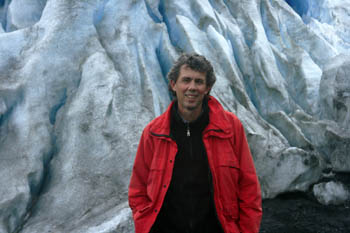
| |
Gary Freeburg Photography |
ABOUT THE AUTHOR
Gary Freeburg was born 1948 in Minneapolis, Minnesota, and was raised there. After serving in Vietnam in the U.S. Navy, Freeburg received three degrees in photography: his B.F.A. and M.A. from Minnesota State University at Mankato in 1974 and 1977 and his M.F.A. from the University of Iowa in 1978. He lived and worked in Alaska for twenty-five years and served as a professor of art at the University of Alaska's Kenai Peninsula College, where he directed the art program and served as the curator in the campus art gallery that now bears his name. He is currently a professor of art and the director of Sawhill Gallery at James Madison University. Freeburg has worked with renowned photographers and educators, such as Ansel Adams, Oliver Gagliani, and John Schultz, and his photographs have been exhibited nationally and appeared in Under Northern Lights, Writers and Artists View the Alaskan Landscape and Looking North (University of Washington Press, 1998; 2000). He has received an Individual Artist Fellowship Grant from the Alaska State Council on the Arts, Anchorage; an honorary degree for his contribution to the visual arts from Alaska Pacific University, Anchorage; and an Art Educator of the Year Award in Higher Education from the Alaska Art Education Association. He was recognized by the Getty Center for Education in the Arts for his art advocacy work in Alaska and Washington, DC, and a documentary film by George C. Johnson, An Artist's Journey to the Valley of Ten Thousand Smokes: The Photography of Gary Freeburg, serves as a capstone to Freeburg's photographic work in the wilderness of Alaska. ABOUT THE ESSAYISTS John Eichelberger was born in Syracuse, New York, and received his B.S. and M.S. in Earth sciences from the Massachusetts Institute of Technology and a Ph.D. in geology from Stanford University in 1974. He spent the next seventeen years in New Mexico in volcano research related to development of geothermal energy, first at Los Alamos National Laboratory and later at Sandia National Laboratories in Albuquerque, where he was named Distinguished Member of Technical Staff and subsequently Supervisor of Geochemistry Division. While at Sandia, he became intrigued with subsurface exploration of volcanic systems through research drilling. In 1991, Eichelberger became a professor of volcanology at the University of Alaska in Fairbanks, where he aided in the growth of the Alaska Volcano Observatory, which now monitors the Katmai group of volcanoes, and began annual research and teaching pilgrimages to the Valley of 10,000 Smokes, introducing students from all over the world to the incomparable beauty and scientific mystery of the valley and of Katmai's caldera. In 2007, Eichelberger left the university to lead the Volcano Hazards Program of the U.S. Geological Survey, but he continues to teach a volcanology class in Katmai National Park and Preserve every summer. Jeanne M. Schaaf was born in Columbus, Nebraska, in 1953, and was raised in Beemer, Nebraska. She completed her B.A., M.A., and Ph.D. in anthropology with a specialization in archeology at the University of Minnesota in Minneapolis. In 1984, she joined the National Park Service Alaska Regional Office, where she was architect and manager of the Cultural Resource and Paleoecological Research for the Shared Beringian Heritage Program and the National Archaeological Survey Initiative Gulf of Alaska Coastal Survey from 1991–1995. Since 1996 she has been Cultural Resource Manager for Lake Clark and Katmai National Parks and Preserves, Aniakchak National Monument and Preserve, and Alagnak Wild River that comprise nearly 9,000,000 remote but culturally rich acres in southwestern Alaska, a program she built from the ground up. At the National Park Service she has conducted and managed research in the fields of paleoethnobotany, archaeology, history, ethnography, and museum collections. Schaaf has twice received the National Park Service Appleman-Judd-Lewis award for excellence in cultural resource management as well as the Esther Billman Award of Excellence from the Alaska Historical Society for the "impressive number of studies" produced under her direction that have greatly advanced understanding of human occupation and activities in southwestern Alaska.
|
|
|
|
|
